Mottled Skin: Causes, Symptoms, Diagnosis, And Treatment
There are treatment options to help manage and reduce mottled skin.
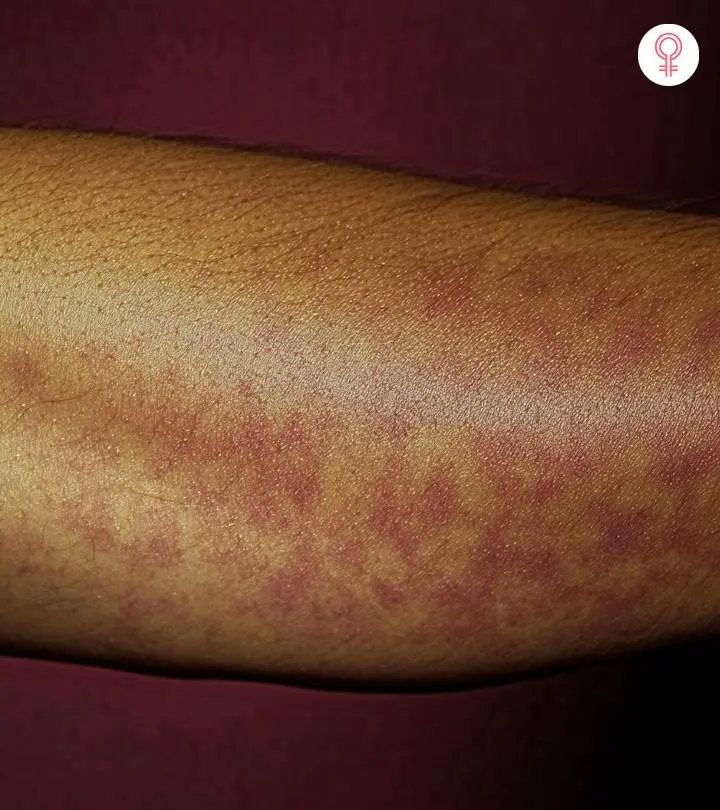
Image: Midjourney/ StyleCraze Design Team
Mottled skin or livedo reticularis is a common sign of poor circulation due to exposure to cold temperatures. It causes blood flow restriction in the small veins beneath the skin, causing the development of fine red or purple skin patches known as reticula. Mottled skin is a temporary skin condition that resolves on its own and usually does not require any medical intervention. However, if it does not go away after a few days, it may also indicate a reaction to medications or due to a serious medical condition that may require immediate medical attention.

Keep reading to understand why the skin mottles, symptoms, diagnosis, and when it is a cause for concern.
In This Article
What Is Mottling Of Skin?
Mottling is a condition characterized by red, gray, and purple patches in a net- or lace-like pattern that appear on your skin. You may begin to notice these patchy marks on your arms, legs, knees, and the back. A variety of conditions can lead to mottling of the skin – the most common of them being exposure to cold surroundings. In some cases, this leads to a disruption in blood flow due to the variations in temperature.
Young women commonly experience mottled skin on legs due to the exposure to extreme cold weather. Mottled skin may also be caused by the deposition of calcium within the blood vessel walls or endothelial dysfunction (where the blood vessels on the heart’s surface constrict) (1).
Mottled or blotchy skin can either be caused due to isolated factors or as a side effect of some medication. Medications prescribed for Parkinson’s disease are known to commonly cause this skin condition (2).
 Fun Fact
Fun FactLet us understand the common signs of mottled skin and how you can identify it.
Key Takeaways
- Livedo reticularis is characterized by the appearance of net- or lace-like purple patches on the skin.
- The leading causes of mottled skin include blood vessel spasms, poor circulation, lupus, and cold surroundings.
- It is usually a harmless condition, but consult a dermatologist if the condition does not subside.
What Are The Symptoms Of Mottled Skin?
Here are the most common symptoms of mottled skin:
- Color Variations: Mottled skin typically appears as a purple or red patch. You may even notice a dappled appearance on the skin.
- Pattern: A closer inspection may reveal a network of lacy-looking or netted patches leading to an uneven, discolored skin tone.
- Location: It usually affects the skin on the legs or arms.
- Other Signs: These include pain in the lymph nodes or the development of ulcers related to mottled skin.
However, these symptomsare only based on anecdotal evidence. Sometimes, this skin discoloration may also occur in the case of an ulcerative colitis rash. Therefore, it is recommended to consult a doctor for proper diagnosis.
We will look into the causes of mottled skin in the next section.
What Are The Causes For Mottling Of Skin?
Mottled skin can be caused due to many factors. However, poor blood circulation and blood vessel spasms are the leading causes (1). Poor blood circulation can be a result of high cholesterol and high blood pressure levels. Smoking also may narrow blood vessels and restrict the normal flow (3).
Other causes of mottled skin include:
- Lupus
Lupus
lupus erythematosus (LSE)) is an autoimmune disease that affects multiple body organs. You may begin to notice lesions on your skin, which eventually may turn into red and purple variegated patches (4). You may try natural remedies for lupus to manage the symptoms. However, always consult a doctor before trying home remedies.
- Exposure To Extreme Cold
Exposure to extremely cold or freezing temperatures causes your body to restrict blood flow to your skin by constricting the blood vessels. This thermoregulatory function happens to preserve your core temperature – resulting in the formation of purple speckled skin. In this case, the mottled, spotted skin can be reversed by exposing yourself to warmer temperatures (5).
- Bier Spots
Another cause of skin mottling is Bier spots. This is common among individuals aged 20 to 40 years and is more significant in women. Here, you notice white marble-like patterns instead of purple and red splotchy patches. Skin mottling due to Bier spots is harmless and requires no treatment. However, Bier spots may signify other underlying conditions that may warrant relevant treatment (6).
- Shock And Trauma To The Body
Shock and trauma to the body in the form of electric burns, injuries, or blunt force can damage your blood vessels. Such trauma can disrupt blood flow to various parts of your body, including your skin. This may eventually lead to mottling of the skin (3).
- Pancreatitis
People with acute pancreatitis may find their abdominal skin mottling. In a study, a 40-year-old woman experiencing acute pancreatitis developed a blue rash on her abdominal region. Further examination suggested it to be mottled skin. Her mottled abdominal skin was found to be consistent with her previous pancreatitis attacks (6).
- Sepsis
Sepsis is your body’s extreme response to an infection during a life-threatening emergency. It occurs when a pre-existing infection causes a chain reaction within your body. Untimely treatment may even result in death. Sepsis may also cause skin mottling (7).
- Rheumatoid Arthritis
Rheumatoid arthritis is characterized by inflammation of the joints. It also may cause tissue damage and chronic pain. An uncommon manifestation of rheumatoid arthritis is rheumatoid vasculitis. The condition causes inflammation, ulcers, and gangrenous formations on the skin. It is observed only in 1% of rheumatoid arthritis patients. Rheumatoid vasculitis also affects blood vessels and may cause mottled skin (8).
These are some of the causes of mottled skin. But how to diagnose it and when should you consult a doctor?
How To Diagnose Skin Mottling And When To See A Doctor?
Red and purple patches in a lace-like pattern on your skin can almost always denote mottled skin. Mottled skin usually does not require a doctor’s visit as it tends to subside in a day or two. However, symptoms that prolong or get you seriously worried warrant a doctor’s inspection.
 Quick Tip
Quick TipIf you are suffering from mottled skin and are seeking treatment for it, let us understand how you can go about it.
Treatment Options For Mottling Of Skin
With regards to the treatment of mottled skin, there is no one specific method or medication. It solely depends on a case-to-case basis. A person suffering from Parkinson’s disease is likely to have mottled skin as a side effect from the medication they are taking as part of their treatment. Similarly, some medications that are critical to the treatment of certain conditions may cause the mottling of the skin, which doesn’t mean that you stop taking that medication.
While it is essential to consult with a healthcare professional for proper treatment of mottled skin, there are some home remedies you may try to reduce its appearance. Some of them include:
- Warm Compress
Soak a clean cloth in warm water and wring out the excess water. Place it on the affected area for 10-15 minutes. Repeat 2-3 times a day. This may help improve blood circulation, which may reduce the mottled appearance (10).
- Massage
Use any moisturizer of your choice to nourish the skin. Massage the affected area gently during application to improve circulation (11). You may also visit a professional massage therapist.
- Stay Active
Regular physical activity may improve overall circulation and help with blood flow (12). This, in turn, may reduce the appearance of mottled skin. You may try activities like walking, yoga, and swimming.
- Drink Plenty Of Water
Keeping yourself hydrated may help maintain healthy skin and improve circulation (13). This may potentially reduce mottling. So, aim for at least 8 glasses of water per day. Along with this, it is also recommended you follow a healthy diet.
Apart from this, avoid putting weight on the arms or legs for long periods. For instance, if you like sitting with your legs crossed, avoid doing that for longer periods. Instead, uncross them from time to time to allow proper blood flow. Also, refrain from wearing tight clothes that may reduce blood flow. Instead, opt for multiple, light layers to keep yourself warm.
Infographic: A Comprehensive Guide To Understand Mottled Skin
If your skin looks blotchy with a lacy network of purple or red patches, chances are you have mottled skin. Factors like sepsis, high blood pressure, and rheumatoid arthritis may result in the development of these patches. Check out the infographic below to get a better understanding of the condition and when to take action. Scroll down to know more!
Some thing wrong with infographic shortcode. please verify shortcode syntaxMottling of the skin is a disorder in which you may experience red and purple lace-like patches on your skin. This could be due to something as simple as being exposed to extremely cold temperatures or as severe as lupus or Parkinson’s disease. Mottled skin is not considered a serious issue; however, see your dermatologist to determine the exact causes behind the symptoms if the problem persists. Unfortunately, there is no one-size-fits-all treatment for mottled skin. Each case must be treated individually depending on the diagnosis that determines the underlying reason.
Frequently Asked Questions
Should I be worried about mottled skin?
While mottled skin is considered harmless, you should consult a doctor if it doesn’t heal with warming or you develop painful lumps or other accompanying symptoms.
Is it normal to have mottled skin?
Yes. Mottled skin is quite common in a cold climate, but you shouldn’t dismiss it if it persists.
Can heat cause mottled skin?
Yes. Erythema ab igne (EAI) or toasted skin syndrome, is a mottled rash on the torso that can be seen in people exposed to local or regional heat (14).
Mottled skin, although a common and transient condition causing patches of discoloration, is usually harmless. To better understand this occurrence and explore possible treatment options, watch this informative video given below!
References
Articles on StyleCraze are backed by verified information from peer-reviewed and academic research papers, reputed organizations, research institutions, and medical associations to ensure accuracy and relevance. Read our editorial policy to learn more.
- Livedo Reticularis: A Review of the Literature
https://www.ncbi.nlm.nih.gov/labs/pmc/articles/PMC4594389/ - Skin Disorders in Parkinson’s Disease: Potential Biomarkers and Risk Factors
https://www.ncbi.nlm.nih.gov/labs/pmc/articles/PMC5352163/ - Platelets and Cardiovascular Disease
https://www.ahajournals.org/doi/full/10.1161/01.CIR.0000086897.15588.4B - Cutaneous Manifestations of Systemic Lupus Erythematosus
https://www.ncbi.nlm.nih.gov/labs/pmc/articles/PMC3410306/ - Raynaud Disease
https://www.ncbi.nlm.nih.gov/books/NBK499833/ - Bier spots: An uncommon cause of mottled skin
https://www.ncbi.nlm.nih.gov/pmc/articles/PMC7464368/ - Livedo Reticularis: Bier spots: a benign vascular anomaly
https://www.ncbi.nlm.nih.gov/pmc/articles/PMC4769466/#:~:text=Bier%20spots%20are%20diagnosed%20clinically,elevation%20of%20the%20affected%20extremity. - Alteration of Skin Perfusion in Mottling Area During Septic Shock
https://www.ncbi.nlm.nih.gov/labs/pmc/articles/PMC3848827/ - Arthropathy in Dermatology: A Comprehensive Review
https://www.ncbi.nlm.nih.gov/labs/pmc/articles/PMC5372453/ - Effect of cold and heat therapies on pain relief in patients with delayed onset muscle soreness: a network meta-analysis
https://www.ncbi.nlm.nih.gov/pmc/articles/PMC8862647/ - Effect of massage on blood flow and muscle fatigue following isometric lumbar exercise
https://pubmed.ncbi.nlm.nih.gov/15114265/ - Physiology, exercise
https://www.ncbi.nlm.nih.gov/books/NBK482280/ - Water, hydration, and health
https://www.ncbi.nlm.nih.gov/pmc/articles/PMC2908954/ - Erythema Ab Igne: A Mottled Rash on the Torso
https://www.cureus.com/articles/26132-erythema-ab-igne-a-mottled-rash-on-the-torso
Read full bio of Dr. Harryono Judodihardjo
Read full bio of Reevan Vishwas Rego
Read full bio of Anjali Sayee
Read full bio of Swathi E










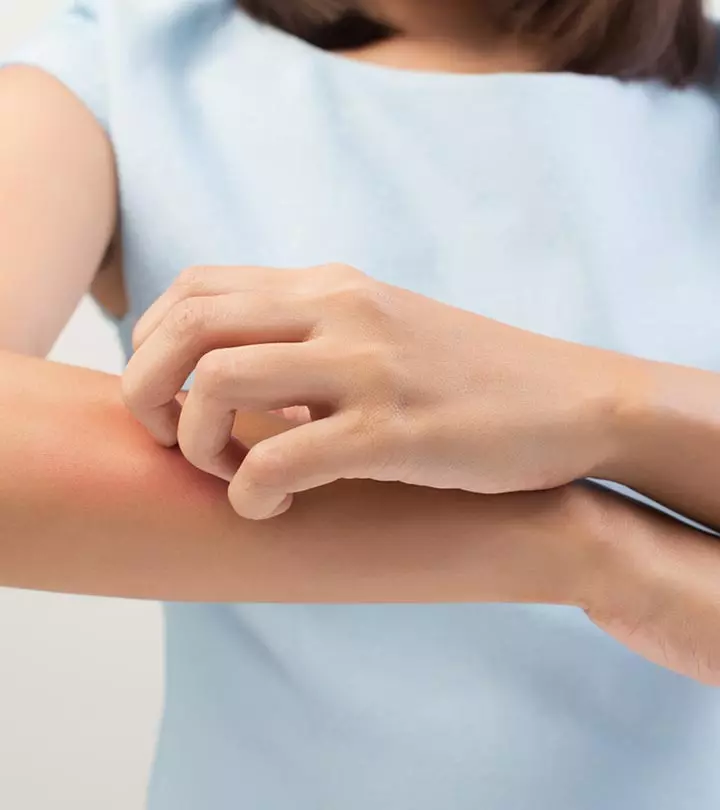

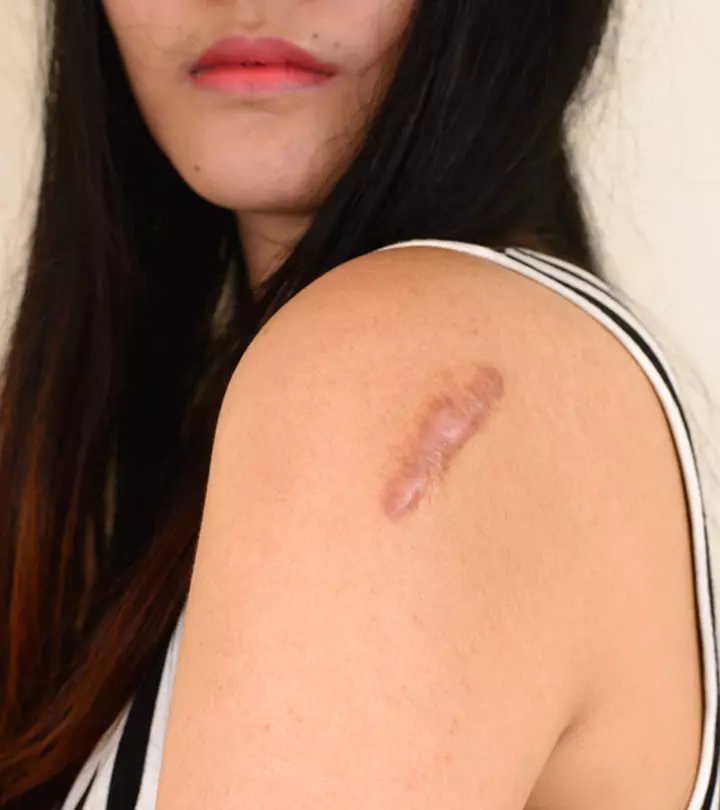




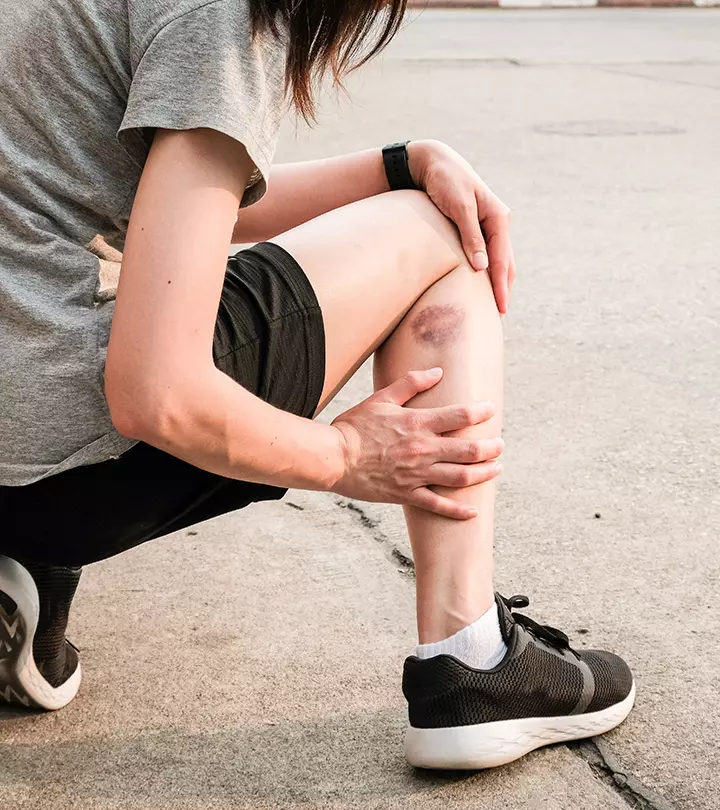







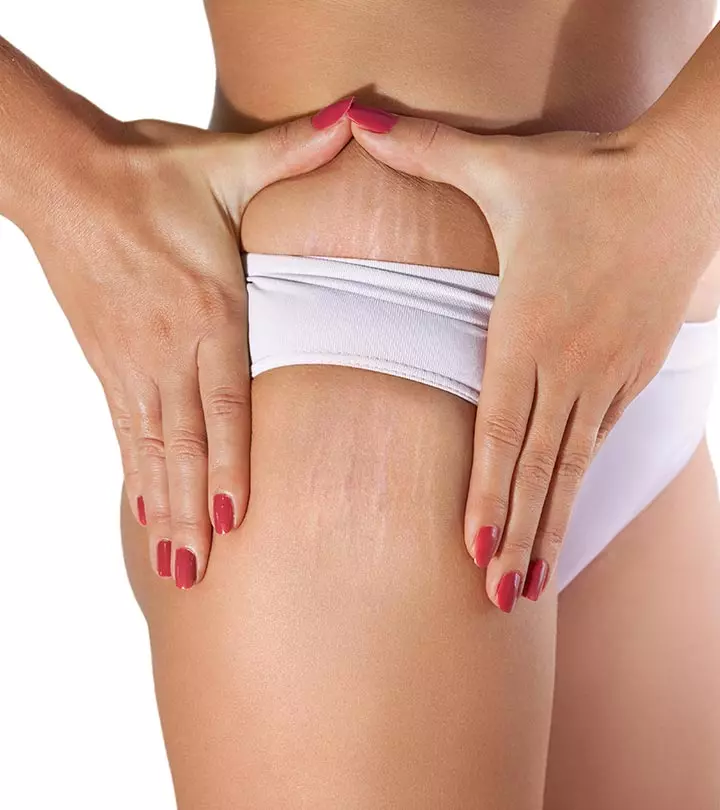

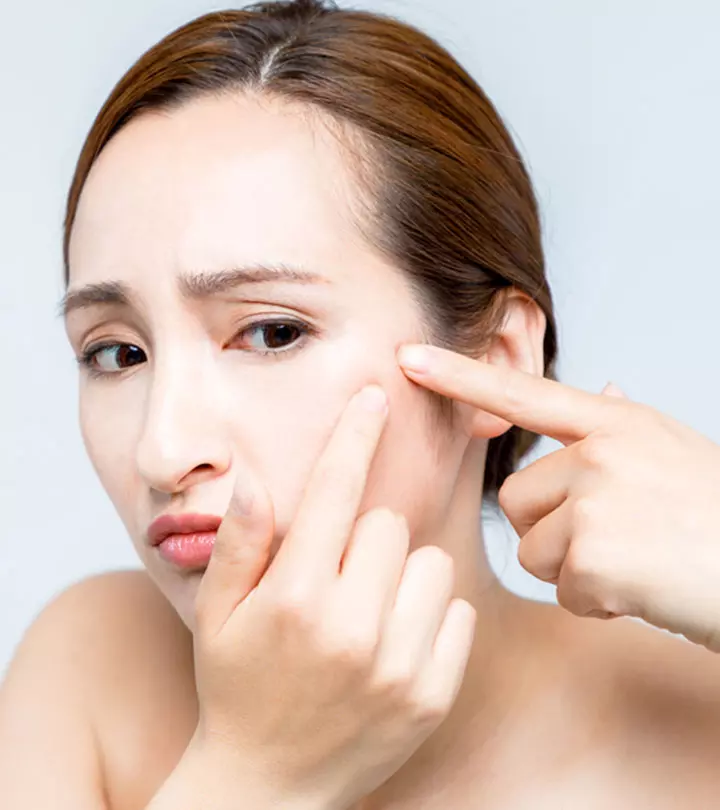
Community Experiences
Join the conversation and become a part of our empowering community! Share your stories, experiences, and insights to connect with other beauty, lifestyle, and health enthusiasts.